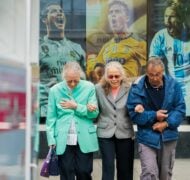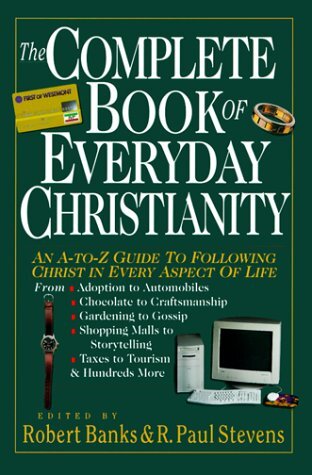Aging
Book / Produced by partner of TOW
Every species has a definite life span, and human beings are no exception. Aging is an inevitable concomitant of life. As the preacher put it: “For everything there is a season, and a time for every matter under heaven: a time to be born, and a time to die” (Eccles. 3:1-2 NRSV). Human beings age rapidly. The human body attains its peak of efficiency early. The rate of scar formation begins to decrease as early as age fifteen. Eventually, there are inescapable signs of physical decline: failing eyesight, impaired hearing, shortness of breath, high blood pressure; often associated with these is a measure of mental deterioration: memory lapses (an inability to remember the recent past while retaining intact older memories) and frequent repetitiveness. The final stage of the aging process is that of second childhood: when a semiliquid diet replaces solid food, the digestive function becomes the focus of attention, and one becomes increasingly dependent on the care of doctors and nurses.
The aging process, being biologically determined, is part of God’s providence and is to be accepted with grace. Somerset Maugham, the Nobel Prize-winning novelist, was obsessed with the matter of his longevity and sought desperately to arrest the aging process. During the last twelve years of his life he regularly submitted to a series of rejuvenation treatments (involving life-preserving injections) at a clinic in Switzerland. It is doubtful whether they extended his physical life. What is not in question is the moral and intellectual deterioration that was such a sad feature of his final years.
Not everyone resorts to such desperate expedients; more popular is cosmetic surgery. Medical science suggests, however, that self-acceptance is the best antidote and cure for the discomforts that are inseparable from growing old.
Aging from a Sociological Point of View
Sociologists note the significant involvement of older people in politics and religion as well as their active membership in clubs, lodges and auxiliaries. Golden-age clubs and senior-citizen groups, which provide recreational, educational, health and welfare services, cater to an aging population and have an important role to play. There are also widely read magazines for seniors, such as Modern Maturity.
The older people are, the fewer the social roles open to them. Older people retire from work, their children leave home, their peers die, and their contacts with others tend to contract and lessen. Social activity, however, remains greatest among those who are in good health and who come from a higher, rather than a lower, socioeconomic background. For those with a living spouse, the marital relationship continues to be of central importance, making possible a variety of joint activities. Shakespeare speaks of the seven ages of humankind. He paints a sad and poignant picture of human beings in their dotage: “sans teeth, sans eyes, sans everything.” Though the aging process is often sad, it can also be strangely beautiful, for Christians believe that “at evening time there shall be light” (Zech. 14:7 NRSV).
The extraordinary advances in medical science, together with the availability of new drugs, have had a dramatic effect on such things as life expectancy. An increasingly aging population is a social challenge. Most of the elderly are women. Furthermore, there is a growing disparity between the age of retirement and the time when all biological effects of aging begin to make themselves felt.
Aging from a Biblical Perspective
The classic description of the aging process is that given by the preacher in Eccles. 12. He provides a beautiful and poetic description of progressive fading and failing in each of the several faculties of the body. It is a picture of sad and ineluctable deterioration and decay.
We are exhorted to remember our Creator in the days of our youth “before the sun and the light and the moon and the stars are darkened,” before “the day when the guards of the house tremble, and the strong men are bent, and the women who grind cease working because they are few, and those who look through the windows see dimly; when the doors of the street are shut” (Eccles. 12:2, 3-4 NRSV). The marvelous beauty of the imagery cannot disguise the fact that what is being described is the painful loss of one’s capacity to work, walk, eat, see and hear. The exhortation then is to look beyond all earthly vanities, to face the fact of our coming mortality: when “the silver cord is snapped, and the golden bowl is broken, and the pitcher is broken at the fountain, and the wheel broken at the cistern, and the dust returns to the earth as it was, and the breath returns to God who gave it” (Eccles. 12:6-7 NRSV). So, in matchless language, the remorseless decay of all our faculties and their final dissolution are portrayed.
Other passages of Scripture highlight additional facets of aging. The psalmist describes divine companionship in the green pastures and by the still waters and also in the valley of the shadow of death (Psalm 23). The apostle Paul uses the image of a tent to speak of the body: a time is coming when the tent must be pulled down, to be replaced by “a building from God, a house not made with hands, eternal in the heavens” (2 Cor. 5:1 NRSV). In the meantime, those who are aging know that their times are in God’s hands (Psalm 31:15). Each age has its own glory. If the young are given the privilege of seeing visions, the old are given that of dreaming dreams (Joel 2:28). If there is the happy remembrance of things past, there is also the joyous anticipation of what is yet to be: “No eye has seen, no ear has heard, no mind has conceived what God has prepared for those who love him” (1 Cor. 2:9).
» See also: Body
» See also: Church Family
» See also: Empty Nesting
» See also: Grandparenting
» See also: Retirement
» See also: Sickness
» See also: Soul
References and Resources
R. Blythe, The View in Winter: Reflections on Old Age (Baltimore: Penguin, 1981); S. M. Chown, ed., Human Aging (Baltimore: Penguin, 1972); N. Coni, W. Davison and S. Webster, Aging (Oxford: Oxford University Press, 1992); D. Hobman, ed., The Impact of Aging (London: Croom Helm, 1981); R. A. Kenney, Physiology of Aging (Chicago: Year Book Medical Publishers, 1989); P. Tournier, Learning to Grow Old (London: SCM, 1972).
—Barton Babbage





